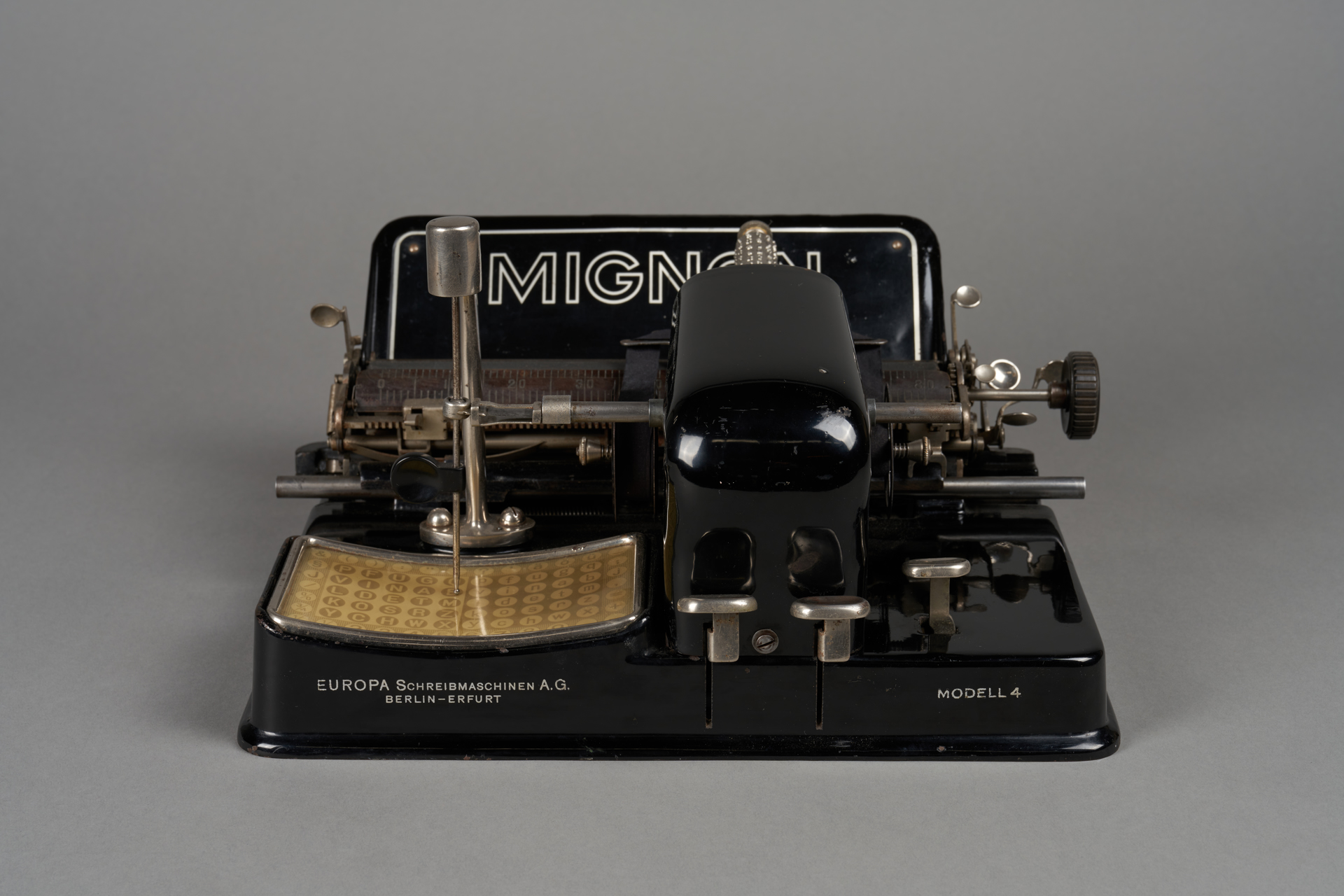
Mignon 4 typewriter
Europa Schreibmaschinen AG, Berlin-Erfurt, von Hefner-Alteneck, Friedrich, / 1924Creator
Europa Schreibmaschinen AG, Berlin-Erfurt, von Hefner-Alteneck, Friedrich
Time and place of creation
Time:
1924
Place:
Germany
Manufactured in 1923-1933, the relatively inexpensive Mignon 4 index typewriter was designed to facilitate, and above all automate and accelerate the writing process. One could type on the device by using a pointer suspended above an index, which was a concave board with a table of 84 characters (in a rectangular 7 x 12 layout) attached to the base. The user moved the metal pointer over the selected character using his or her left hand. The position of the drum-shaped type head over a sheet of paper, inserted into the moving carriage of the machine with a rotary rubber platen, changed in accordance with the movement of the pointer over the index board. Pressing one of the three keys to the right of the index impressed the selected character on the paper as the head hit the platen through the ink tape. The other two keys were for adding spaces and moving to the next line, or for returning the carriage with paper. The index and the head could be easily replaced, which allowed the typeface or alphabet used in the device to be changed (e.g., to Hebrew or Cyrillic).
The device was produced by Union Schreibmaschinen GmbH, which was established in 1903 and was a daughter company of the German AEG (German: Allgemeine Elektricitäts-Gesellschaft) electrical engineering group. The company changed its name several times (in 1930 it was known as Europa Schreibmaschinen AG; in 1936 as Olympia Büromaschinen AG). In 1912 the production profile was extended to include standard typewriters. In 1931, the first Olympia typewriter was launched, which gave its name to an entire brand. In the same period the company produced the Enigma encryption device under a licence from Heimsoeth & Rinke.
The operating mechanism of the Mignon typewriters was prepared on a commission from AEG by the German engineer Friedrich Franz Heinrich Philipp von Hefner-Alteneck, on the basis of patent no. 149308 of 1901 submitted by Louis Sell from Berlin. Originally, Sell wanted to create an electrical typewriter. Although the designer’s death in 1903 put a stop to the work on the device, the materials and prototypes that were left allowed it to be brought into mass production. The Minion machines were copied by many other manufacturers including Yu Ess, manufactured in the United States, Stella in France, and Tip-Tip in Czechoslovakia. These copies could be made because the Versailles Treaty annulled the rights to German industrial patents.
Author: Filip Wróblewski
Mignon 4 typewriter
Europa Schreibmaschinen AG, Berlin-Erfurt, von Hefner-Alteneck, Friedrich, / 1924Creator
Europa Schreibmaschinen AG, Berlin-Erfurt, von Hefner-Alteneck, Friedrich
Time and place of creation
Time:
1924
Place:
Germany











